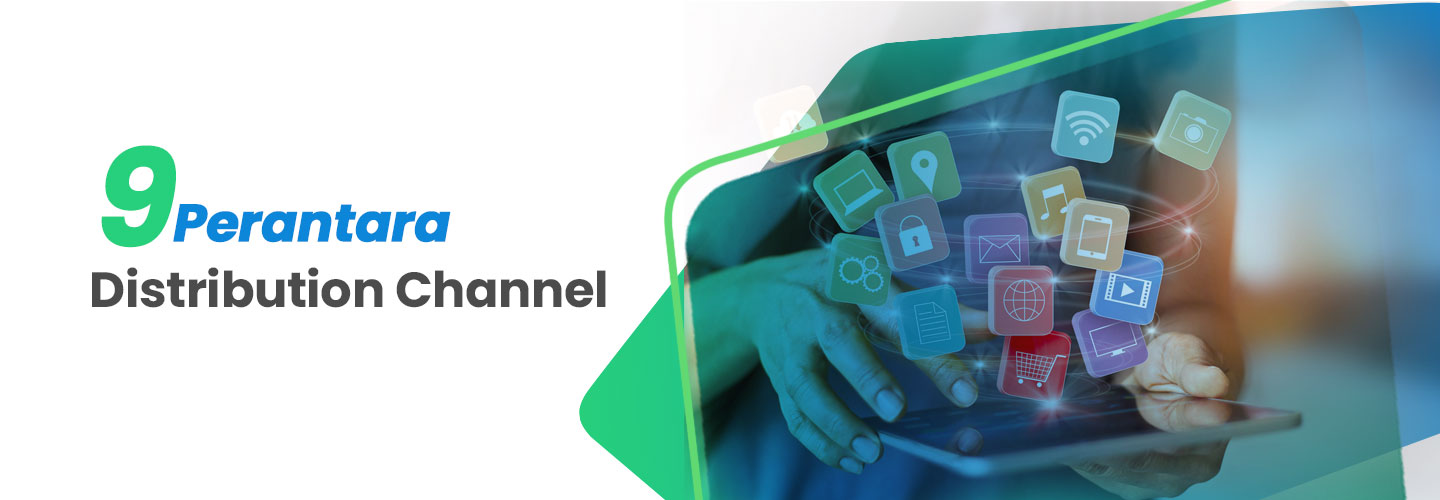9 Intermediaries that Help the Distribution Process to Consumers

Distribution channel is a way to make sure the product can reach the consumer. The main goal is to accommodate the availability of products in many outlets and at any time. That way, consumers can immediately use the product.
Distribution channels must be carried out efficiently because the impact will be directly felt on sales. To ensure that distribution goes well, companies can pay attention to product distribution methods, either through direct channels, indirect channels, or hybrids.
For direct channels, producers send products directly to consumers so that producers have full control over the distribution process. It is different with indirect channels which allow products to be sent by intermediaries, not sellers or companies.
Finally, a hybrid which is a combination of direct and indirect channels. Typically, the producer has a partnership with an intermediary, but still retains control over contact with the customer. Well, here are the distribution intermediaries of some of these distribution channels.
1. Retailer
Retailers are intermediaries often used by companies, so each business has full selling rights. However, generally the price sold by retailers is higher than the price issued by the company. Supermarkets, pharmacies, restaurants and bars are included as retailers.
2. Wholesaler
These intermediaries generally will not buy and sell goods in small quantities. Wholesalers will return to selling products in their own stores or to other retailers. Because purchases are made in large quantities, the prices that wholesalers pay to companies are usually also lower.
3. Distributor
Distributors are indirect channel intermediaries because they are tasked with selling, storing, and offering technical assistance to retailers and wholesalers. In its operations, the role of distributors is focused on certain areas.
4. Agent
An agent is a legal entity hired to sell company goods to consumers who will later be paid according to the commission from the sale. In this case, the relationship between the intermediary and the company belongs to the long term.
5. Brokers
Apart from agents, other intermediaries who are also hired and earn commissions are brokers. In contrast to agents that last for a long period of time, the company's relationship with brokers only lasts for the short term.
6. Internet
Not many are aware that currently technology has functioned as a distribution intermediary, let's call it the internet. Consumers only need to access social media, and download applications to buy a product. This can be seen with the rise of online stores.
7. Sales team
Sales teams within the company are responsible for selling the product. Even in a large company with a wide variety of audiences and products, it is likely to have more than one team responsible for selling the product.
8. Resellers
As the name implies, resellers will return to selling products to consumers. To get these items, resellers will buy goods from manufacturers or retailers. These resellers can appear as individuals or even companies.
9. Catalog
Sales with a catalog system is when a seller offers his products using magazines. This way of selling can be said as direct channel sales because it is directly connected to companies and consumers.
In making a profit the sellers will get a commission from the number of products they sell. Although it sounds old-fashioned, this method is still used for beauty products.
To find out which one is suitable for use, it's a good idea to make a comparison, review the project, costs, company routines, market potential, logistics, and location first.
Look at how competitors distribute products, adjust the type of distribution to the company's efforts to solve problems in the market, then to make sure the costs incurred are commensurate with the results, do a distribution analysis.
In addition, conduct a market potential analysis and ensure that the distribution is aligned with the projects and business activities. Also pay attention to distribution logistics, and the location of intermediaries because your product must be available in an area close to the location of your target consumers.
Managers must know the product flow before it enters the company until it reaches the final consumer. Through the Supply Chain Management program, managers in both operational and non-operational positions can broaden their business horizons by linking functions within the entire business chain and network.
